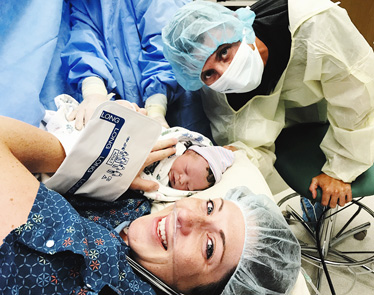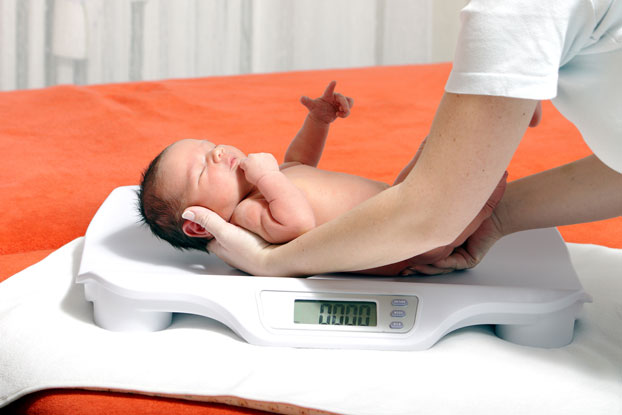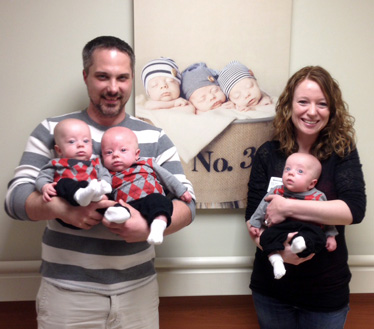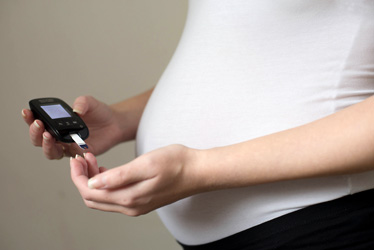4 Abnormal Types of Menstrual Period: Signs to Watch For
![]() With each menstrual cycle, the uterine lining (endometrium) prepares itself for fetus development. If fertilization fails to happen, the body discharges the endometrium during the cycle, which typically lasts for about three to eight days. While the severity and duration of the menstrual periods are not the same for every woman, it is abnormal when the periods are too light, too heavy, occur too often, last longer, irregular or occur after menopause.
With each menstrual cycle, the uterine lining (endometrium) prepares itself for fetus development. If fertilization fails to happen, the body discharges the endometrium during the cycle, which typically lasts for about three to eight days. While the severity and duration of the menstrual periods are not the same for every woman, it is abnormal when the periods are too light, too heavy, occur too often, last longer, irregular or occur after menopause.
Some causes of irregular bleeding are not consequential. A number of things can cause the abnormality. These may include hormone-based birth control, infection of the uterus lining or cervix, STI, blood clotting disorders, and other health conditions.
About Premenstrual Syndrome (PMS)
PMS is an unpleasant, but typically normal, symptom that women experience during the menstruation cycle. The symptoms may last for a few hours to several days, and the intensity and variety of the symptoms differ from woman to woman. Premenstrual Dysphoric Disorder (PMDD) is the most prevalent form of PMS. It affects approximately 5 percent of women at reproductive age.
Yeast Infections: What’s normal, and when should you call your ob/gyn?
Every woman, at some point in her life, is likely to experience a yeast infection. A yeast infection is an annoying infection of the vagina and vulva that causes itching, discharge and irritation. It is a type of vaginitis caused by an overgrowth of yeast known as Candida albicans and is often easily treated at home, but occasionally it may be severe enough to warrant a visit to your doctor.

On average, three out of four women will suffer a yeast infection at some point in their lives. Some women experience several throughout their lifetimes. While the condition isn’t considered to be a sexually transmitted disease, the fungus can spread through oral contact with female genitals. It’s important to know about the signs and symptoms of a yeast infection and when you should see your ob/gyn.
Managing Pre-Eclampsia & Eclampsia
What is preeclampsia?
Preeclampsia is a serious condition that develops only in pregnancy, usually after the 20th week of gestation. In preeclampsia, the mother’s blood pressure rises to dangerously high levels, which can damage her blood vessels and arteries. This restricts blood flow throughout her body, including to her brain and her baby. If left untreated, preeclampsia can cause damage to multiple organs in the mother’s body.
When preeclampsia occurs before the 32nd week of pregnancy, doctors call it early-onset preeclampsia. Usually, the condition occurs later in the third trimester. The mother’s kidneys and liver are most prone to damage from the disease. If not treated, preeclampsia can result in severe or even fatal complications for the mother and the baby.

What is eclampsia?
Eclampsia is a severe complication of preeclampsia, in which the swelling of blood vessels due to high blood pressure becomes so severe that it causes seizures and interferes with the mother’s brain function. Eclampsia occurs in approximately one in 200 cases of preeclampsia. It can happen even in women with no history of seizures.
How to Manage Polycystic Ovarian Syndrome (PCOS)
Polycystic ovarian syndrome (PCOS) is a metabolic condition occurs when the body produces excess androgens (male hormones), excess insulin or has low-grade inflammation. There are many genetic and environmental factors that come into play with this condition. If a woman is obese, does not get adequate exercise, or has a family history of the disease, she has a greater chance of developing this disorder.
PCOS has links to the endocrine system. It typically affects women between the ages of 18 and 44, and can cause infertility. The condition isn’t just a modern-day issue. Historical documents show that women experienced the symptoms as long ago as 1721 in Italy. Today, anywhere from 2 to 20 percent of women in the reproductive-age will develop polycystic ovaries.
What Are The Signs and Symptoms of PCOS?
One underlying cause of this condition is insulin resistance. The body produces excessive amounts of insulin to control the sugar, which is mostly caused by being overweight. All the excessive insulin causes overactive productions of both testosterone and androgen, both male sex hormones.
Meet the Oakley Family in Kansas City
Meet the Oakley family, who delivered all three of their babies with Dr. Meghan Nichols at Kansas City ObGyn - including their son Baker, who was diagnosed with Down syndrome in utero. We caught up with mom, Mackenzie Oakley, to find out how their very special family is doing now!
 Kansas City ObGyn: You mentioned Dr. Meghan Nichols delivered all three of your babies! How was your experience? What kept you coming back to Dr. Nichols with each pregnancy?
Kansas City ObGyn: You mentioned Dr. Meghan Nichols delivered all three of your babies! How was your experience? What kept you coming back to Dr. Nichols with each pregnancy?
Mackenzie Oakley: Yes! She delivered all three! I started seeing Dr. Nichols before she helped establish Kansas City ObGyn and of course wanted to follow her to the new practice. I felt comfortable with Dr. Nichols from day one and when my husband and I decided it was time to start a family, I knew I wanted her support during pregnancy. Dr. Nichols isn't an alarmist, she always presents the facts and if there are issues or concerns, she always makes sure to follow up and give us the information we need to to have the best course of care in place.
KCO: When were your babies born? What are their names?
Mackenzie: My husband, Justin, and I welcomed our oldest daughter, Gracyn, in January 2013 followed by our daughter, Leighton, in December 2014. Our son, Baker, was born in August 2017. It's kind of crazy to think we had three kids in less than five years but we're enjoying the chaos so far!
Understanding Low Birth Weight
What Does Low Birth Weight Mean?
Low birth weight contributes to 60 to 80 percent of neonatal deaths worldwide. Approximately 20 million low birth weight babies are born every year, most of them in developing countries. Preterm births, those occurring before the 37th week of pregnancy, are also on the rise. They account for over 10 percent of births globally. Most premature infants also have low birth weights.
Complications from prematurity and low birth weight are the leading cause of death for children under age five around the world. Many survivors of preterm birth and low birth weight may suffer from disabilities such as learning problems, hearing impairment and vision issues.
The normal range of birth weight is from 5.5 to 8.75 pounds. Delivery after the 37th week of pregnancy is considered “at term.” Any baby born weighing less than 5.5 pounds is low birth weight, and a baby born before 37 weeks is premature.

About one in 12, or eight percent, of babies in the United States is born underweight, and about two-thirds of these low birth weight babies are also premature. A small percentage, about 1.4 percent of babies have very low birth weight – under 3.5 pounds. Almost all of these babies are premature, and some are extremely premature – born at 25 weeks or earlier.
The number of babies born with low birth weight is increasing along with the number of multiple births in the United States. More than half of multiple birth babies have low birth weight, and six percent of single birth babies are born with low birth weight.
Meet the Asher Family of Triplets in Kansas City
 Meet the family of Becky and James Asher, who delivered their triplet babies with Kansas City ObGyn in July 2013. We followed up mom Becky to find out how the babies and family are doing.
Meet the family of Becky and James Asher, who delivered their triplet babies with Kansas City ObGyn in July 2013. We followed up mom Becky to find out how the babies and family are doing.
Kansas City ObGyn: Which physicians delivered your babies?
Becky Asher: Dr. Nichols with Dr. Arroyo assisting. I was bummed that my doctor, Dr. Newby, was out of town and couldn’t be there because I loved her! However, Dr. Nichols and Dr. Arroyo did a fabulous job.
KCO: How was your experience?
Becky: Dr. Nichols and Dr. Arroyo were both outstanding. My nurse, Amber, was also great. She took some pictures for us in the delivery room that I will always cherish. We had a team of almost 20 people in there, as each baby had its own set of support staff. Our boys were born on the “4th of July night” (though it was actually July 5th because it was after midnight). But I very vividly remember one of the respiratory therapists, I think his name was Rusty, being decked out in American flag scrubs and thinking it was pretty awesome!
Understanding & Managing Gestational Diabetes
What is Gestational Diabetes?
Gestational diabetes occurs only while a woman is pregnant. The disease usually develops in the second trimester, after the 24th week of pregnancy if the woman was not already diabetic. Studies reported by the Centers for Disease Control estimate anywhere from two to 10 percent of pregnant women in the U.S. develop gestational diabetes every year. The rate was 9.2 percent in the 2014 CDC report.
 Diabetes, including gestational diabetes, occurs when the body does not efficiently process food into glucose, or blood sugar. The pancreas makes insulin, a hormone which helps the body do this efficiently or use glucose for energy like it should. When the pancreas produces insufficient insulin, or the body cannot use the insulin it creates in the way it should, diabetes is the result.
Diabetes, including gestational diabetes, occurs when the body does not efficiently process food into glucose, or blood sugar. The pancreas makes insulin, a hormone which helps the body do this efficiently or use glucose for energy like it should. When the pancreas produces insufficient insulin, or the body cannot use the insulin it creates in the way it should, diabetes is the result.
When a woman is pregnant, the placenta that supports her baby also secretes hormones. Some of these hormones block the action of insulin from the mother, creating a condition called insulin resistance. Insulin resistance makes it harder for the mother’s body to use her insulin, and she may need up to three times the insulin she would otherwise. Without enough insulin, her body cannot take the glucose from the food she eats and turn it into energy. The glucose builds up in her blood to dangerously high levels, called hyperglycemia (high blood sugar).
Meet the Balwanz Family of Twins in Kansas City
 Meet the Balwanz family, Joanie and Josh, who delivered their twin babies with Kansas City ObGyn on September 30, 2016. We followed up mom Joanie to find out how the babies are doing now.
Meet the Balwanz family, Joanie and Josh, who delivered their twin babies with Kansas City ObGyn on September 30, 2016. We followed up mom Joanie to find out how the babies are doing now.
Kansas City ObGyn: Which physician delivered your babies?
Joanie: Dr. Heit delivered my baby girls.
KCO: How was your experience?
Joanie: We loved Dr. Heit. From day one, he made us feel so comfortable. He treated me as if I was his own family, and I felt he made decisions that put my and my twins’ safety first. He explained things well to my husband and me always, and never made us feel anxious about the pregnancy or birth. We always felt that he took his time during our doctor visits, and would recommend him highly!
KCO: Did anyone else who helped deliver your babies stand out to you?
Joanie: We had an excellent experience from he moment we were admitted to the hospital. From the nursing staff and on, we felt well taken care of. As far as prior to the delivery, Kim the sonographer at Kansas City ObGyn was outstanding. She took her time and explained things well that were going on through the developmental stages of the pregnancy. She was a lifesaver.
Postpartum & Postnatal Depression
What is Postpartum Depression
Postpartum depression, or postnatal depression, is a cluster of symptoms nearly identical to clinical depression but diagnosed only in women who are pregnant or who have recently delivered a baby or suffered a miscarriage. Postpartum depression symptoms can be so severe they impair the woman’s ability to care for herself, her baby, and her family. Without proper treatment, symptoms may last for months or years, and they may go on to become a chronic depressive disorder.
Symptoms can include:
- Deep feelings of sadness, anxiety or despair
- Chronic exhaustion
- Constant worry or obsession about the health of the baby
- Negative or ambivalent thoughts about the baby

Postpartum depression is a common medical condition, occurring in about 14 percent of births. Any woman can get the condition. It happens after childbirth, stillbirth and miscarriage. It merely is a common complication of childbirth. Considering the enormous biological, physical, emotional and other changes a woman undergoes during pregnancy, labor, birth and motherhood; it is no wonder she is at risk for emotional disturbances.
Nearly 50 to 75 percent of women experience what is called the “baby blues” after delivery. These feelings of unhappiness, fatigue, worry, anxiety, sadness and crying spells usually start a day or two after birth and go away on their own after a week or two. They do not interfere with the woman’s ability to care for her baby.
However, at the other end of the spectrum, postpartum psychosis is a very rare condition affecting only 0.1 to 0.2 percent of women, or about one to two per 1,000 women after childbirth. It is a different disorder than postpartum depression and involves psychotic symptoms such as hallucinations and delusions. This disorder is a medical emergency and may place the life of the mother and her baby in immediate danger.
Meet the Martin Family of Twins in Kansas City
 Meet the Martin family, Sarah and AJ, who delivered their twin babies with Kansas City ObGyn on November 8, 2015. We followed up mom Sarah to find out how the babies and family are doing.
Meet the Martin family, Sarah and AJ, who delivered their twin babies with Kansas City ObGyn on November 8, 2015. We followed up mom Sarah to find out how the babies and family are doing.
Kansas City ObGyn: Which physician delivered your babies?
Sarah Martin: Dr. Nichols has been my OB/GYN for about nine years and she was the doctor who delivered my twins via C-section. However, because it was twins, they had to have two obstetricians in the operating room, so Dr. Newby also helped deliver them.
KCO: How was your experience?
Sarah: Awesome! I seriously cannot say enough good things about Dr. Nichols! I just love her! Since I was having multiples, I had more frequent check-ups and sonograms throughout my pregnancy, and it was always so enjoyable to see Dr. Nichols and catch up and ask her my list of questions I always had. We found out we were pregnant at five weeks, and around seven weeks on a Sunday before my first obstetrician visit, I started bleeding. Fortunately having never experienced infertility or miscarriage, I was shocked and assuming the worst. The office got me in early the next morning for a sonogram and that is where we got the surprise of our lives. We hadn’t lost a heartbeat, we had gained two of them! So then they fit us in for an obstetrician appointment with Dr. Nichols that morning and just laughing with her about our state of shock and what was to come made it all seem less scary. Even though I know Dr. Nichols and all the other great staff at the office are so busy, I never felt rushed or like she was trying to hurry my visit. We chatted about life and laughed and went over any questions or concerns I had. She helped me be at ease through my pregnancy and also prepared me for the scheduled C-section, so once that day came, I was not apprehensive at all. She’s just a truly great physician!






